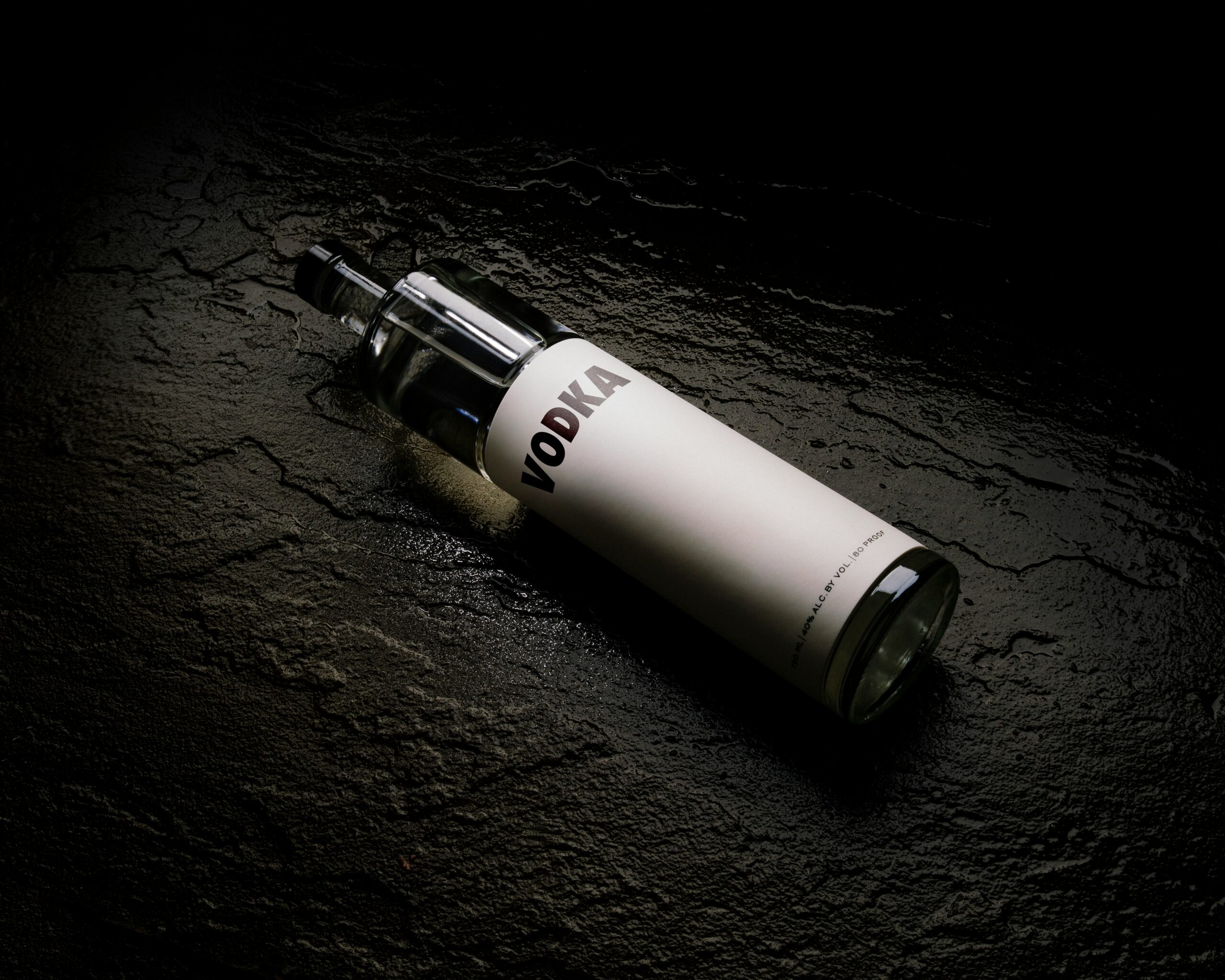Introduction to the Tragedy
In a devastating incident that has shocked the nation, an illicitly brewed batch of liquor has claimed the lives of 54 individuals in India. The tragedy unfolded in the state of Bihar, a region with a history of stringent prohibition laws aimed at curbing alcohol consumption. Initial media reports, emerging on the evening of October 2nd, 2023, highlighted the sudden surge in fatalities, drawing attention to the severe consequences of consuming toxic homemade alcohol.
The victims, hailing predominantly from rural areas, began experiencing severe symptoms such as vomiting, blurred vision, and acute abdominal pain, shortly after consuming the spurious liquor. Local healthcare facilities were quickly overwhelmed as the number of affected individuals skyrocketed. With medical resources stretched thin, the true scale of the disaster became increasingly apparent, prompting immediate intervention from state authorities and law enforcement agencies.
Early investigations have revealed that the illicit liquor, often referred to as “hooch,” was laced with highly toxic chemicals, rendering it deadly. This tragic event has not only resulted in a significant loss of life but has also reignited debates about the effectiveness of prohibition laws and the illegal alcohol trade that continues to thrive despite stringent regulations.
As the initial shockwaves of the incident reverberate across the country, both local and national media outlets continue to provide updates, detailing the ongoing rescue efforts and the measures being taken to prevent such occurrences in the future. The response from the community and the government underscores the gravity of the situation, as Bihar mourns the loss of its citizens and grapples with the implications of this catastrophic event.
Details of the Incident
The tragic incident began unfolding when residents of a small town in India consumed illicitly brewed liquor. Initial reports suggest that the toxic alcohol was sold at a local market, where unsuspecting individuals purchased it, unaware of the fatal consequences. The victims, seeking a cheap alternative to regulated alcohol, consumed the tainted liquor over the course of a few days.
Shortly after consumption, the victims began exhibiting alarming symptoms. Many reported severe abdominal pain, nausea, and dizziness. As the hours passed, the symptoms escalated to include vomiting, blurred vision, and loss of consciousness. Families and neighbors, noticing the rapid deterioration in health, rushed the affected individuals to local hospitals.
Despite the medical efforts, the situation quickly spiraled out of control. Local hospitals, unprepared for such a large influx of patients with acute alcohol poisoning, struggled to provide adequate care. The severity of the symptoms and the speed at which they progressed overwhelmed the healthcare facilities. This prompted medical professionals to raise alarms with higher authorities.
Authorities were alerted when the death toll began to rise sharply. Law enforcement and government officials swiftly responded, launching an investigation into the source of the toxic liquor. Preliminary findings indicate that the illicit alcohol contained high levels of methanol, a toxic substance that can cause severe poisoning and death even in small quantities.
The community, now gripped by grief and outrage, demanded immediate action against those responsible for the tragedy. As the investigation continues, authorities are working to identify and apprehend the individuals behind the production and distribution of the deadly liquor. This incident underscores the urgent need for stricter regulations and enforcement to prevent such a calamity from occurring again.
Immediate Response from Authorities
Following the tragic incident in which the death toll from the consumption of illicit liquor rose to 54, local authorities and emergency services acted promptly to mitigate further casualties and address the crisis at hand. Emergency response teams were deployed to the affected areas immediately after the first reports of poisoning surfaced. Ambulances and medical personnel were mobilized to transfer the afflicted individuals to the nearest hospitals, ensuring swift medical intervention.
Hospitals in the vicinity were put on high alert, with medical professionals working around the clock to administer life-saving treatments. The urgency of the situation necessitated the use of emergency protocols, including the administration of antidotes and supportive care to counteract the toxic effects of the adulterated alcohol. Intensive care units (ICUs) were prepared to handle the influx of patients requiring critical care, and additional medical staff were called in to manage the surge in hospital admissions.
In parallel with the medical response, law enforcement agencies launched an immediate investigation into the source of the contaminated liquor. As part of their initial actions, several individuals suspected of being involved in the production and distribution of the illicit alcohol were detained. Authorities conducted raids on known locations associated with illegal liquor operations, seizing substantial quantities of the tainted substance to prevent further distribution.
The local government also issued public advisories warning residents about the dangers of consuming unregulated alcohol and urging them to seek medical help if they experienced any symptoms of poisoning. These measures were aimed at curbing the spread of misinformation and ensuring that the community remained informed and vigilant.
Overall, the immediate response from authorities and emergency services was crucial in addressing the acute health crisis and laying the groundwork for a thorough investigation into the tragic incident. The coordinated efforts of medical teams, law enforcement, and local government officials underscored the severity of the situation and the need for decisive action to prevent future occurrences.
Background on Illicit Liquor in India
Illicit liquor, often termed as “hooch” or “country liquor,” has been a persistent issue in India, significantly affecting public health and safety. The consumption of this illegal alcohol is widespread, particularly in rural and economically disadvantaged areas. Several socio-economic factors contribute to this phenomenon, including poverty, lack of education, and limited access to regulated alcoholic beverages. The affordability and easy availability of illicit liquor make it an attractive option for those who cannot afford branded spirits.
Statistics reveal the severity of this problem. According to a report by the National Crime Records Bureau (NCRB), around 1,500 to 2,000 deaths occur annually in India due to the consumption of illicit liquor. These figures underscore the widespread nature of the issue and the significant risk it poses to public health. The production of illicit liquor often involves hazardous methods and the use of toxic substances, such as methanol, which can lead to severe health complications, including blindness, organ failure, and death.
Past incidents further highlight the perilous nature of this issue. One of the most tragic cases occurred in West Bengal in 2011, where over 170 people lost their lives due to the consumption of tainted liquor. Similarly, in 2019, a hooch tragedy in Assam claimed the lives of more than 150 individuals. These events are not isolated; they are part of a disturbing pattern that continues to plague various regions across the country.
The socio-economic backdrop against which these tragedies occur is complex. Unemployment, low income levels, and lack of enforcement of liquor laws create an environment where illicit liquor can thrive. Additionally, the social stigma associated with alcohol consumption in some communities drives individuals to seek out concealed and unregulated sources. Despite efforts by authorities to curb the production and distribution of illicit liquor, the challenge remains formidable due to the deep-rooted socio-economic issues.
Government and Public Reaction
In the aftermath of the tragic incident, both the government and the public have reacted with profound concern and urgency. Government officials at both local and national levels have issued statements expressing their condolences and vowing to take strict action against those responsible. The Chief Minister of the affected state has ordered an immediate investigation, promising that no stone will be left unturned in bringing the perpetrators to justice. National leaders, including the Prime Minister, have also expressed their grief and have called for stringent measures to prevent such incidents in the future.
The public’s response has been equally intense. Social media platforms are flooded with messages of sorrow and outrage, with hashtags calling for justice for the victims trending nationwide. Citizens are demanding accountability and more stringent regulations on the sale of alcohol to prevent such tragedies from recurring. In several cities, spontaneous protests have erupted, with people taking to the streets to voice their frustration and demand action from the authorities.
Community efforts to support the victims’ families have been heartwarming. Local NGOs and volunteer groups have mobilized swiftly to provide immediate aid, including financial assistance, counseling services, and logistical support for the affected families. Fundraising campaigns have been launched to assist with medical expenses for those hospitalized and to support the families who have lost their primary breadwinners.
This tragic event has sparked a broader conversation about public health and safety regulations concerning alcohol consumption. It has highlighted the need for more robust enforcement of existing laws and potentially the introduction of stricter penalties for violations. As the nation mourns the loss, there is a collective call for systemic changes to prevent such a disaster from happening again.
Investigations and Legal Actions
The tragic incident of toxic liquor claiming 54 lives in India has triggered a comprehensive investigation by law enforcement agencies. Authorities are meticulously tracing the origins of the adulterated alcohol to identify the individuals and networks responsible for its production and distribution. Preliminary reports indicate that several raids have been conducted across various locales, targeting known hotspots for illicit liquor manufacturing.
In the wake of the tragedy, law enforcement has arrested numerous suspects believed to be linked to the production and distribution of the spurious alcohol. These arrests range from small-scale bootleggers to large-scale distributors, indicating the extensive reach of the illegal operation. The arrested individuals are facing charges under stringent laws related to the manufacture and sale of illicit liquor, ensuring that severe penalties will be imposed upon conviction.
Despite these efforts, the investigation faces significant challenges. One of the primary difficulties is the clandestine nature of the illicit liquor trade. Operations are often conducted in remote areas, making it difficult for law enforcement to locate and dismantle them. Furthermore, the use of sophisticated methods to evade detection, such as mobile production units and hidden distribution channels, complicates the task.
Additionally, there are concerns about the possible involvement of corrupt officials who may be turning a blind eye to illegal activities in exchange for bribes. This corruption poses a significant obstacle, as it undermines the effectiveness of the raids and arrests. Law enforcement agencies are also contending with limited resources and manpower, further hampering their ability to conduct a thorough and widespread crackdown.
Efforts are being made to address these challenges, including increased coordination between different law enforcement agencies and the use of advanced technology to track and trace illicit operations. The government has also announced plans to review and strengthen regulations governing the production and sale of alcohol to prevent such tragedies in the future. As the investigation progresses, it is hoped that those responsible for this devastating incident will be brought to justice, and measures will be put in place to avert similar occurrences.
Impact on the Community
The recent liquor tragedy in India has cast a long, dark shadow over the local community, leaving an indelible mark on those who have lost loved ones. Families are grappling with an overwhelming sense of grief and helplessness, as personal stories of the victims reveal the true extent of the calamity. For instance, Ramesh, a daily wage laborer, lost his only source of support when his elder son succumbed to the toxic liquor. His story exemplifies the emotional and financial turmoil experienced by many in the area.
The psychological repercussions are profound, with many community members experiencing trauma and anxiety. The sudden loss has not only disrupted their lives but has also instilled a pervasive sense of fear regarding the safety of local products. Mental health professionals in the region report a significant increase in cases of depression and post-traumatic stress disorder (PTSD) among the affected families.
Economically, the tragedy has further strained an already vulnerable community. The victims were predominantly earning members, and their untimely deaths have left families struggling to make ends meet. Local businesses, particularly small vendors and shopkeepers, are also feeling the pinch as consumer confidence plummets. People are now wary of purchasing locally-produced goods, leading to a decline in sales and, consequently, a reduction in income for many households.
In addition to these immediate impacts, the incident has sparked widespread outrage and calls for stricter regulation of the local liquor industry. Community leaders are urging the government to implement more rigorous quality controls and to hold accountable those responsible for the tragedy. The local administration is under pressure to provide financial aid and support services to the affected families, aiming to alleviate some of the economic and psychological burdens they are currently facing.
The broader impact of this tragedy serves as a stark reminder of the need for systemic changes to prevent such incidents in the future. The community’s resilience is being tested, but there is a collective hope that through collaborative efforts, healing and recovery will eventually be possible.
Preventive Measures and Future Steps
The tragic incident that claimed 54 lives due to the consumption of illicit liquor has underscored the urgent need for comprehensive preventive measures and future steps. Authorities are proposing and implementing various strategies to mitigate such disasters. One of the primary measures includes tightening legislation around the production, distribution, and sale of alcohol. Enhanced regulations aim to close existing loopholes that unscrupulous manufacturers exploit to produce and distribute illicit liquor.
Increased enforcement is another critical aspect being emphasized. Law enforcement agencies are being equipped with advanced tools and training to detect and dismantle illegal liquor operations more effectively. Regular inspections of licensed liquor establishments and unannounced raids on suspected illegal operations are being intensified. These efforts are crucial in ensuring that illicit liquor does not reach consumers.
Public awareness campaigns are also being ramped up to educate the populace about the dangers of consuming unregulated alcohol. These campaigns utilize various media platforms, including television, radio, social media, and community outreach programs, to disseminate information on the health risks associated with illicit liquor. By raising awareness, authorities hope to reduce the demand for such products, thereby cutting off the market for illegal operators.
Community-based initiatives are playing a vital role in these preventive measures. Local communities are being encouraged to participate in monitoring and reporting suspicious activities related to illicit liquor production and distribution. Grassroots organizations and local leaders are being mobilized to create a network of vigilance that can act as the first line of defense against the spread of illegal alcohol.
These combined efforts of legislative changes, stringent enforcement, widespread public awareness, and community involvement are aimed at creating a safer environment and preventing future tragedies like the recent liquor incident. It is through these comprehensive and collaborative measures that authorities hope to curb the menace of illicit liquor effectively.


